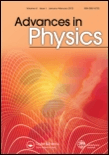
ADVANCES IN PHYSICS
Scope & Guideline
Exploring New Frontiers in Condensed Matter Research.
Introduction
Aims and Scopes
- Stochastic Thermodynamics and Statistical Mechanics:
The journal emphasizes research in stochastic processes and thermodynamic principles, investigating their applications in various physical systems, such as in the context of martingales and path integrals. - Condensed Matter Physics:
A core area of focus is the properties and behaviors of condensed matter, including studies on dislocations, superconductivity, and density waves, which provide insights into material properties at microscopic levels. - Quantum Mechanics and Quantum Gases:
Research related to quantum gases and cavity quantum electrodynamics (QED) is highlighted, showcasing the journal's commitment to exploring new paradigms in many-body physics and the interaction of light with matter. - Materials Science and Thin Films:
The journal covers advancements in materials science, particularly regarding thin films and nanoionic phenomena, which are crucial for developing new technologies and understanding material properties.
Trending and Emerging
- Nanoionic and Memristive Phenomena:
There is a notable increase in research surrounding nanoionic effects and memristive phenomena, particularly in metal oxides, indicating a growing interest in the implications of these materials for future technology. - Stochastic and Path Integral Methods:
The application of stochastic calculus and path integral methods in various physical contexts is on the rise, highlighting a trend towards integrating mathematical frameworks with experimental and theoretical physics. - Strongly Correlated Electron Systems:
Research into strongly correlated electron systems, including superconductivity and unconventional density waves, is becoming more prominent, signaling a deepening exploration of complex interactions in condensed matter.
Declining or Waning
- Classical Thermodynamics:
Research focusing on classical thermodynamics principles, while foundational, has seen decreased emphasis compared to more complex and modern interpretations involving stochastic and statistical approaches. - General Reviews and Editorials:
The frequency of general review articles and editorials, which were once prevalent, seems to be declining as the journal shifts towards more specialized and detailed research contributions.
Similar Journals
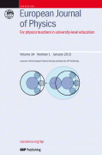
EUROPEAN JOURNAL OF PHYSICS
Unveiling Innovative Research in PhysicsEuropean Journal of Physics, published by IOP Publishing Ltd, is a premier international journal serving the diverse field of physics and astronomy. With a commitment to advancing scientific knowledge since its inception in 1980, the journal provides a platform for original research articles, reviews, and topical discussions in various domains, including theoretical and experimental physics. Operating out of the United Kingdom, the journal has achieved a commendable Q2 ranking in the Physics and Astronomy (miscellaneous) category for 2023, reflecting its robust influence in the academic community, alongside a notable Scopus Rank that underscores its relevance in both the Social Sciences and General Physics and Astronomy fields. Although it does not currently offer open access, the journal's traditional publication model ensures rigorous peer review, maintaining high scholarly standards that are imperative for researchers, professionals, and students striving to stay ahead in their respective fields. Don't miss the opportunity to engage with cutting-edge research and contribute to the ongoing dialogue in physics by accessing this vital resource.
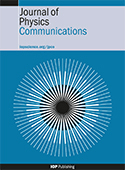
Journal of Physics Communications
Fostering Innovation in Physics and AstronomyJournal of Physics Communications, published by IOP Publishing Ltd, serves as a significant platform for the dissemination of innovative research in the realm of physics and astronomy. Since its inception in 2017, this Open Access journal has fostered a collaborative environment, allowing researchers, professionals, and students to share their findings and ideas without barriers. With an ISSN of 2399-6528, the journal has established its credibility in the academic community, achieving a ranking of Q3 in the 2023 category of Physics and Astronomy (miscellaneous), as well as a respectable position in Scopus with a rank of #122 out of 243 in its field. The journal's focus is on bridging theoretical concepts and practical applications, making it an essential resource for those engaged in the evolving landscape of physics. The Journal of Physics Communications not only aims to advance knowledge but also to inspire interdisciplinary collaboration, inviting contributions from diverse areas within physics. Authors and readers alike will find this journal particularly beneficial to stay updated on emerging trends and innovative research.
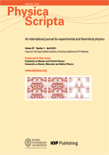
PHYSICA SCRIPTA
Nurturing Knowledge and Innovation in Physics Since 1970PHYSICA SCRIPTA, established in 1970 and published by IOP Publishing Ltd, is a prestigious journal dedicated to the broad fields of physics, encompassing topics such as atomic and molecular physics, condensed matter physics, and mathematical physics. With an impressive commitment to advancing scientific knowledge, it holds a significant standing in the academic community, evidenced by its Q2 and Q3 rankings across various categories in 2023. The journal is instrumental for researchers, professionals, and students seeking to disseminate and engage with high-quality research, fostering collaboration and innovation within the field. Although it currently does not offer open access options, its robust editorial standards ensure the dissemination of impactful studies, contributing to its rising citation metrics. Published from the United Kingdom, PHYSICA SCRIPTA continues to be a vital resource for contemporary developments in physics, paving the way for future discoveries.

CHINESE PHYSICS LETTERS
Rapidly Publishing Groundbreaking DiscoveriesChinese Physics Letters is a prestigious journal published by IOP Publishing Ltd, based in the United Kingdom. Since its inception in 1984, the journal has served as a vital platform for disseminating impactful research in the field of physics, achieving a noteworthy Q1 ranking in the category of Physics and Astronomy (miscellaneous) as of 2023. Renowned for its rapid publication process, this journal is dedicated to providing a forum for high-quality, concise articles that address innovative theoretical and experimental findings relevant to both the academic community and industry practitioners. With an impressive Scopus rank of #52 out of 243, placing it in the 78th percentile, Chinese Physics Letters continues to influence the global physics landscape. Researchers, professionals, and students alike find this journal indispensable for staying abreast of the latest developments and trends in physics.
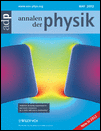
ANNALEN DER PHYSIK
Connecting Scholars Through Groundbreaking ResearchANNALEN DER PHYSIK, a prestigious journal published by WILEY-V C H VERLAG GMBH, stands as a cornerstone of the field of physics and astronomy since its inception in 1799. With an ISSN of 0003-3804 and an E-ISSN of 1521-3889, this journal provides a platform for innovative research and critical discourse across various domains of physics. Annalen der Physik is currently ranked in the Q2 category for general physics and astronomy, occupying rank #76 out of 243 in Scopus, placing it within the 68th percentile. This indicates its significant impact and the quality of research it publishes. Although the journal does not offer Open Access options, its robust historical lineage and ongoing contributions ensure that it continues to be an essential resource for researchers, professionals, and students alike. For those seeking to stay at the forefront of contemporary physics research, ANNALEN DER PHYSIK represents a vital source of knowledge, innovation, and scholarly communication.

JETP LETTERS
Bridging Tradition and Innovation in Scholarly ResearchJETP LETTERS, published by MAIK NAUKA/INTERPERIODICA/SPRINGER, is a prestigious journal in the field of physics and astronomy, which plays a pivotal role in disseminating groundbreaking research and innovative ideas since its inception in 1969. With an ISSN of 0021-3640 and an E-ISSN of 1090-6487, this journal aligns well with the interests of both seasoned researchers and emerging scholars, having achieved a 2023 category rank of Q3 for miscellaneous topics within physics and astronomy. Located in the United States at 233 SPRING ST, NEW YORK, NY 10013-1578, JETP LETTERS serves as a critical resource for its readership, offering exclusive insights and advancements across diverse areas of physics. While not open access, it hosts a collection of articles that refine theoretical approaches and experimental methods, providing both knowledge and inspiration to professionals and academics seeking to make impactful contributions to the scientific community. The journal’s quality is reflected in its Scopus ranking, where it stands at 39 out of 81 in the multidisciplinary category, placing it in the 52nd percentile, thus underscoring its significance and reliability as a scholarly outlet.

REVISTA MEXICANA DE FISICA
Connecting Emerging Scholars with Established Research in PhysicsREVISTA MEXICANA DE FISICA is a prominent academic journal dedicated to advancing knowledge in the fields of Physics and Education. Published by the SOC MEXICANA FISICA, this journal plays a pivotal role in disseminating innovative research and educational methodologies from Mexico and beyond. With a publication history that spans from 1991 to 2024, it has established itself as an essential resource for researchers, professionals, and students who seek to deepen their understanding of general physics and astronomy. The journal is classified in the Q3 quartile in both education and physics & astronomy, showcasing its quality and relevance within the academic landscape. While the journal currently operates on a subscription basis, it provides a valuable platform for emerging voices and established scholars alike. By fostering a collaborative environment for scientific discourse, REVISTA MEXICANA DE FISICA continues to be an important channel for the ongoing evolution of scientific education and exploration in the physical sciences.

Lithuanian Journal of Physics
Exploring New Dimensions in Physical SciencesWelcome to the Lithuanian Journal of Physics, an esteemed publication helmed by the Lithuanian Physical Society, dedicated to advancing the field of physics and astronomy. Established in 2008 and continually publishing insightful research through 2024, this journal aims to provide a platform for high-quality scholarly articles that contribute to the understanding of various physical phenomena. With a steady presence in the academic landscape, the journal is currently ranked in the fourth quartile of the Physics and Astronomy category and is positioned at the 18th percentile in its Scopus ranking, reflecting its niche focus and accessibility for researchers and students alike. Although currently not operating under an open access model, the journal remains a vital resource for professionals seeking to stay informed on the latest developments in the field. The Lithuanian Journal of Physics invites contributions that inspire collaboration and innovation in physical sciences, making it an invaluable resource for the global scientific community seeking to expand knowledge within this dynamic field.
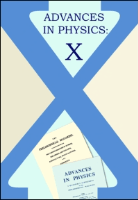
Advances in Physics-X
Elevating Research Standards in Physics and AstronomyAdvances in Physics-X is a premier open-access journal published by Taylor & Francis Ltd, dedicated to advancing the frontiers of knowledge in the field of Physics and Astronomy. Since its inception in 2016, the journal has established itself as a vital platform for researchers and professionals, showcasing innovative research and cutting-edge theories that influence a broad array of sub-disciplines within physics. With an impressive impact factor and ranked in the 94th percentile among its peers, it resides in the Q1 category for Physics and Astronomy (miscellaneous), indicating its significant contributions to the academic community. Located in the United Kingdom, the journal encourages open access to foster wider dissemination and visibility of scholarly works, aligning with contemporary academic trends that prioritize global knowledge sharing. The ongoing commitment to publishing high-quality research ensures that Advances in Physics-X remains an essential resource for students, industry experts, and academics alike, helping to shape the future of physics research through collaboration and innovation.

Science China-Physics Mechanics & Astronomy
Shaping the Future of Physics and Astronomy ResearchScience China-Physics Mechanics & Astronomy, published by SCIENCE PRESS, stands as a prestigious journal within the Physics and Astronomy domain, particularly recognized for its contributions to the understanding of fundamental and applied physics. With an exhilarating Q1 ranking in the 2023 category and earning a remarkable scopus rank of #21 out of 243, the journal demonstrates its significant impact, being positioned in the 91st percentile of its field. Operating under an Open Access model, it facilitates the broad dissemination of high-quality research, ensuring accessibility for researchers, professionals, and students worldwide. Its scope covers a variety of essential topics in physics and astronomy, promoting a comprehensive understanding of the latest advancements from 2010 through 2024. The journal is a vital resource for anyone aiming to stay at the forefront of research in these dynamic fields, with its prominent address located in Beijing, China, symbolizing its global influence.